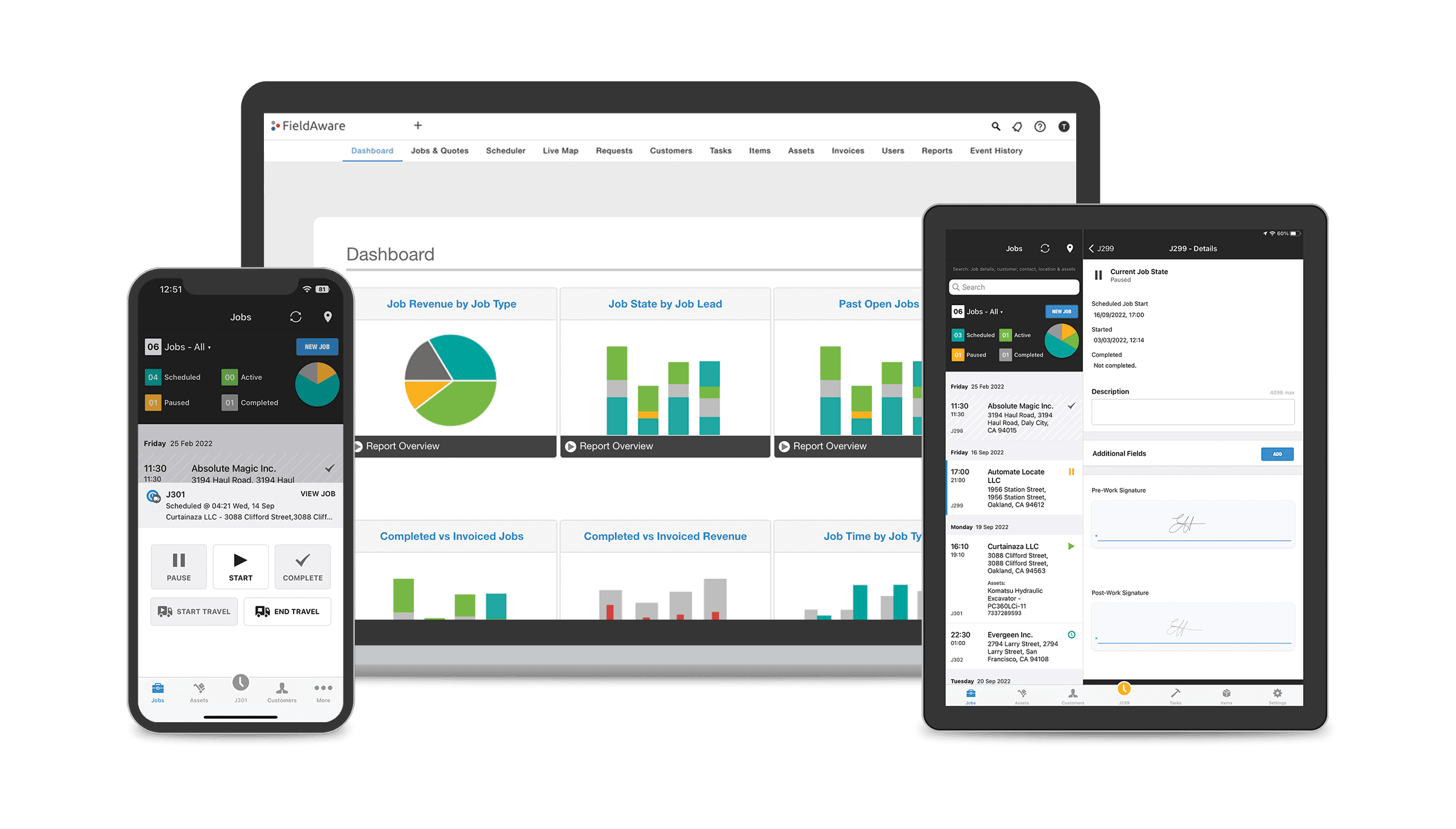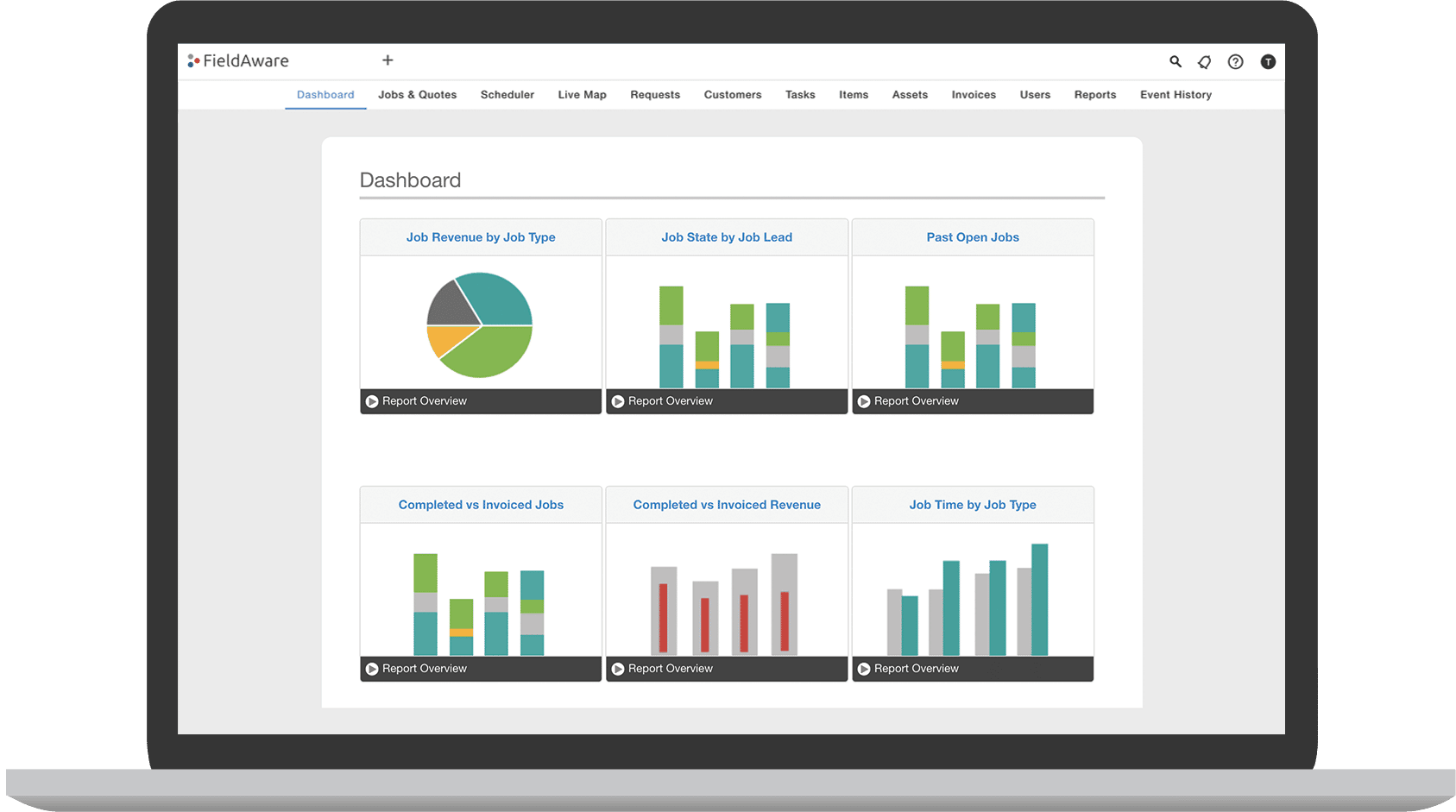
How to Choose the Right Key Performance Indicators (KPIs) to Improve Your Field Service Management (FSM)
Determine the right FSM KPIs by asking the right questions
If you’re a field services company looking to improve efficiency, streamline operations, improve overall customer service, and reduce expense, then utilizing key performance indicators (KPIs) is priority one.
KPIs are the critical metrics that allow a business to set targets and track progress toward an intended result. They provide clear detail on what is working and what isn’t to then create a roadmap to improve overall processes and business operations.
Field service KPIs are designed specifically to fully understand the daily workflow and challenges inherent in field service operations. The right KPIs help field service companies better understand the performance of specific facets of their business and the services they offer customers and can help evaluate the ROI of each field activity.

What Gets Measured, Gets Managed
Choosing what to measure is critical. Too often, managers try to track every possible metric and cannot see the forest for the trees. The proliferation of tracking and other data software allows field service and fleet organizations to gather mountains of data on every aspect of their operations, but data overload can paralyze managers and make businesses less efficient.
The power of tracking KPIs lies in identifying metrics that add the most value to your operation. The KPIs that are the most actionable and easiest to track may not be the ones that provide the best insight or create the most value. Understanding what the company’s information needs truly are and the key questions to answer are pivotal steps to determine which KPIs to track.
The first step in deciding the right KPIs is asking the right questions. You must establish what is most important to the organization and determine the most impactful KPIs to measure.
- How long is the gap between completing jobs and invoicing the customer?
- How often are field engineers missing opportunities to upsell or cross-sell?
- Are there any indications that field engineers do or do not have adequate training so that the business is both reducing job cycle time while also maximizing the customer experience?
- Is the company maximizing the number of jobs that can be completed on a daily, weekly, or monthly basis, or are there opportunities to improve the scheduling process?
- Is the company effectively managing the field tech’s time?
- Process – Business process and workflows
- Financial – Management of revenue, recovery of funds, and financial health
- Technician – Personnel utilization, skill level, and talent management
Of course, every industry and every company has different needs and goals. For instance, expected response time for a particular type of work will differ by industry. Your top priority may involve exceeding the industry standard to be the industry leader, so tracking KPIs for this will enable you to know if the business is trending in the right direction.
Popular Field Service KPIs
Tailored KPIs provide the best value when they’re focused on robust, value-added metrics, and create an actionable plan centered around your company’s top priorities. Done right, they can determine where your business’ biggest problem areas lie and enable you to focus energy and financial resources on the areas that can help increase efficiency, reduce costs, or maximize revenue.
Looking for a place to start? Some of the most popular KPIs used by GPS Insight customers include:

Pinpoint Revenue
The bottom line is your bottom line. What brings in revenue? What isn’t returning a profit? In comparison to overall revenue, it’s critical for field service businesses to precisely pinpoint what each of your services generates.

Job Completed vs. Invoiced
If your technician has completed a job, but has not yet invoiced the customer, they’ve created a revenue ditch. Tracking the rate at which service calls are completed and comparing that to what has been invoiced helps determine whether processes are working. Should you invest in workforce management software and invoice automation to ensure your business receives payments quickly, or are manual processes sufficient?

Customer Retention
Securing new customers is expensive due to the time and cost of researching potential new clients. Existing customers are worth more than new ones. Retaining existing clients demonstrates your value to potential new customers and forms the basis of marketing efforts. Providing great service and ensuring your technicians offer customers new products and services is key to increasing customer retention.

Customer Satisfaction
Customer satisfaction strengthens customer retention. Measuring customer satisfaction is arguably the most important KPI. In field service management, a satisfied customer is a loyal customer, they help attract new customers, and provide a revenue baseline for your operation. Aberdeen Research found that companies with high customer satisfaction rates have an 89% customer retention level, experienced over 6% growth in service revenue, and almost 4% growth in total revenue.

Average Resolution Time
Measuring your first-time fix rate KPI is crucial to understanding your technicians’ productivity. Furthermore, first-time fix rates play a major role in strengthening customer satisfaction. Identifying your company’s average resolution time can help determine which operational tasks are maximizing efficiency and which need adjustment.

Employee Productivity
Determining precisely how productive your employees are will spotlight their strengths and weaknesses. Do you need to provide more training or hire additional techs? Do you need to tweak processes or restructure your current team?

Employee Retention
Just as acquiring new customers is more expensive than keeping current ones, finding, hiring, and training a new tech rather than retaining current staff is expensive and a managerial headache. Understanding your employee retention rate is pivotal to overall success. Improving employee retention is also a key component of attracting quality new hires—high turnover can be a sign of inefficiency or of overall disfunction.
Field Service Management (FSM) Solutions:
Today, there are innovative field service management (FSM) solutions that can help establish the right KPIs and then organize your operation to maximize the information they drive.

FSM software can help create efficiencies, boost productivity, and drive revenue. From scheduling jobs and dispatching workers, to managing the work and optimizing your payment processes, FSM solutions streamline operations, empower your field teams, reduce dependencies, and connect your back-office to the field in one powerful platform.
The best Field Service Management (FSM) solutions:
- Measure performance
- Identify revenue opportunities
- Turn prospects into customers
- Access deep customer insights
- Better manage your field resources
- Optimize schedules and boost productivity
- Give techs the tools to get the job done
- Streamline and automate invoicing
- Increase your cash flow
- Sync with your accounting software





